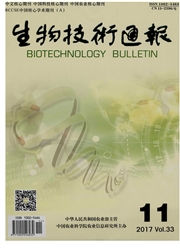

 中文摘要:
中文摘要:
CRISPR/Cas9是由细菌和古细菌等微生物中特有的获得性免疫系统发展起来的基因组编辑技术,可以被一段短的RNA引导到复杂基因组中的特定位置,从而对靶标识别切割。该技术可以很容易对几乎所有生物体中的内源基因组DNA序列及其表达产物进行有选择地被编辑或调控,已成为一种热门的基因组编辑工具,正积极推动着从基础生物学到生物技术和医学等方面的发展。介绍CRISPR/Cas9的研究历史、结构和功能以及、精确识别的分子基础,并就其在基因组编辑中的应用进行了较为详尽的综述,以期为从事该领域的科研人员提供参考。
 英文摘要:
英文摘要:
CRISPR/Cas9 is one of novel genome editing technologies developed from the unique prokaryotic acquired immune system in bacteria and archaea,and it can be guided to specific locations within complex genomes by a short RNA,and thus cleavage of the target can be recognized. Using this technology,DNA sequences within the endogenous genome and their expressed products are now easily edited or regulated in virtually any organism of choice. The technology has become the most popular genome editing tool,promoting the development of basic biology,biotechnology and medicine. This paper introduced the research progress on CRISPR/Cas9 from the aspects of development history,structure and function,and the mechanism of precise recognition,also reviewed the application of this new technology in genome editing in detailed,aiming at providing a reference for related researchers.
 同期刊论文项目
同期刊论文项目
 同项目期刊论文
同项目期刊论文
 Tissue expression, association analysis between three novel SNPs of the RXR alpha gene and growth tr
Tissue expression, association analysis between three novel SNPs of the RXR alpha gene and growth tr 期刊信息
期刊信息
